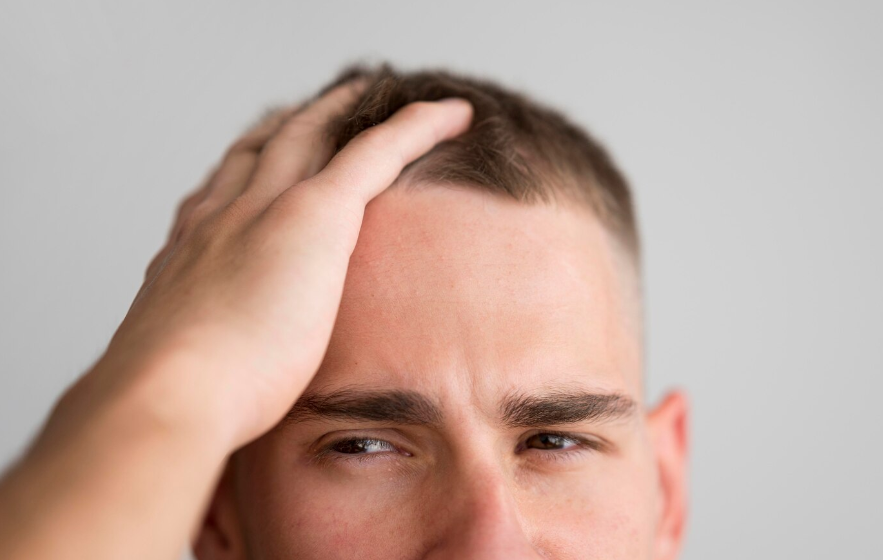Traction Alopecia
Table of Contents

Preventing Traction Alopecia
Traction alopecia is a form of hair loss caused by prolonged tension on the hair follicles, often resulting from certain hairstyles or hair care practices. This condition typically occurs in individuals who regularly wear hairstyles that pull tightly on the hair, such as braids, ponytails, or extensions. Understanding the causes of traction alopecia and implementing preventive measures is essential for maintaining healthy hair and preventing irreversible hair loss.
Causes of Traction Alopecia
The primary cause of traction alopecia is the mechanical stress placed on hair follicles. Hairstyles that involve tight pulling or tension can damage the hair shaft and lead to inflammation of the follicle, which, over time, may result in hair loss. Common contributors include frequent use of tight hairstyles, improper hair care techniques, and the use of heavy hair accessories. Individuals with certain hair types, such as those with curly or coarse hair, may be more susceptible to this condition due to the nature of their hair and the styles they choose.
Symptoms of Traction Alopecia
The symptoms of traction alopecia can vary but typically include thinning hair along the hairline or in areas where tension is applied. Individuals may notice hair loss in patches, particularly around the temples or nape of the neck. In some cases, scalp tenderness or irritation may also be present. If the condition progresses, it can lead to permanent hair loss if the tension on the hair follicles continues.
Treatments for Traction Alopecia
Preventing traction alopecia involves adopting safer hair care practices and making informed choices about hairstyles. Here are some effective strategies:
- Avoid Tight Hairstyles: Limit the use of tight hairstyles, such as tight ponytails, braids, or buns, especially for extended periods. Opt for looser styles that do not put excessive stress on the hair.
- Rotate Hairstyles: Changing hairstyles regularly can help prevent the same areas from experiencing constant tension. This rotation allows hair follicles time to recover from stress.
- Use Soft Hair Accessories: Choose soft hair ties, clips, and bands that do not snag or pull on hair. Avoid rubber bands or heavy accessories that can cause unnecessary tension.
- Take Breaks from Extensions: If you regularly use hair extensions or weaves, take breaks between applications to allow your natural hair and scalp to recover.
- Practice Gentle Hair Care: Be gentle when styling and handling hair. Avoid aggressive brushing or combing, especially when hair is wet, as it is more prone to breakage.
- Keep Hair Moisturized: Maintaining proper moisture levels in your hair can reduce breakage and improve overall hair health. Use conditioners and leave-in treatments to keep hair hydrated.
- Consult a Professional: If you frequently wear certain hairstyles, consider consulting with a hairstylist experienced in protective styles. They can recommend styles that minimize tension and potential damage.
What is traction alopecia?
Traction alopecia is a type of hair loss caused by prolonged tension on hair follicles from certain hairstyles or hair care practices.
What are the common causes of traction alopecia?
Common causes include tight hairstyles like braids, ponytails, and extensions, as well as improper hair care techniques and heavy accessories.
How can I recognize traction alopecia?
Symptoms include thinning hair along the hairline or in areas where tension is applied, patchy hair loss, and potential scalp tenderness or irritation.
Can traction alopecia be reversed?
If caught early and tension is relieved, traction alopecia can often be reversed, and hair regrowth may occur. However, prolonged tension can lead to permanent damage.
What hairstyles should I avoid to prevent traction alopecia?
Avoid tight hairstyles such as high ponytails, tight braids, and cornrows. Opt for looser styles that do not put stress on the hair follicles.
What types of hair accessories are best for preventing traction alopecia?
Choose soft hair ties and clips that do not snag or pull on the hair. Avoid rubber bands and heavy accessories that can create unnecessary tension.
When should I seek professional help for traction alopecia?
If you notice persistent hair loss or have concerns about your hairstyles or hair care practices, consider consulting a healthcare professional or dermatologist for guidance and support.













